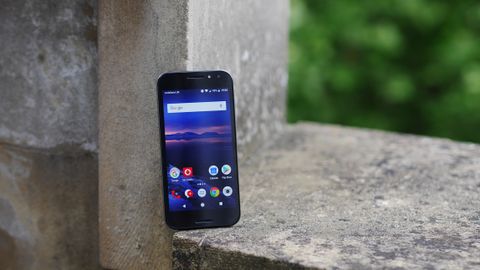Why you can trust TechRadar
Interface and reliability
- Includes mostly useless Vodafone apps
- Runs Android Nougat
More than anything else, a smartphone lives and dies by the software it runs, yet many manufacturers opt to bog things down with endlessly customized ‘skins’.
Thankfully, the trend among budget phones has been to shy away from this needless interference, however the Vodafone Smart N8 is somewhere in the middle.
As a carrier, part of Vodafone’s strategy in selling the Smart N8 at such a low price is to use it as something of a Trojan horse, as a means by which to sell the end user further products and services.
This can be seen in the suite of apps that the firm has baked in, of which there are roughly six. All things considered this isn’t too bad, but in an ideal situation there would be zero.
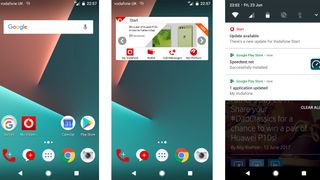
The most egregious inclusion is ‘Accessories’, which is merely a portal through which you can buy expensive earphones and other fluff. ‘Phone Guard’ is a pretty but mostly useless tool, putting glossy graphics on the resource management performed at a system level by Android.
‘MyVodafone’ will likely be of some use to those on the network already – displaying more information about plans etc, and ‘Start’ directs new users straight to a ‘Buy’ section.
In all, while the number of included apps could have been a great deal higher, that they are present at all is a bit of a problem. If an app or feature can be added that makes a tangible improvement to the user experience, then that is wonderful.
But the Vodafone Smart N8 has no such nice software value-adds, all that the pre-installed bloat managed to do is distract and annoy.
One thing that certainly can be said is that the user experience in general is pretty solid. And it even boasts Android 7.0 Nougat, something that some more expensive phones can’t yet claim.
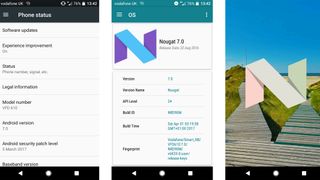
And while the software isn’t as smooth as the likes of that on the Google Pixel or the HTC U11, it does the job well enough. The only real, major quirk that we ran across was the microphone bugging out during voice calls, failing to work at all.
This of course removes the 'phone' functionality, leaving only the 'smart', which is quite an issue if you’re stung by it, but presumably isn’t a problem with all handsets.
Users should note that, as hinted at earlier, most manufacturers are very poor at providing timely software releases. Though the Vodafone Smart N8 has one of the newest versions of Android, it isn’t fully up to date (with 7.1.1 being the latest).
And there’s no word on what the software support might be like for the long-term.
Regardless, what this will mean is that, if you have a bug or quirk, it may never be patched away. If you value always having the latest and greatest versions of Android, this may not be the device for you.
Movies, music and gaming
- Bright screen but poor audio
- Games generally run smoothly
With a bright, reasonably colourful screen, watching movies on the Vodafone Smart N8 is a fairly inoffensive experience.
Though it doesn’t hit the same heights as say, the LG G6, it is nonetheless perfectly acceptable for the price point.
What brings it down considerably is the speaker treatment. Although it points in the right direction, coming out of the front of the phone, it’s powered by a weedy little driver that fails to produce a convincing sound.
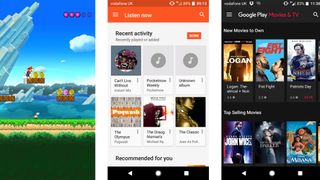
This is also the case with headphones, plugging in causes a big drop off in volume - especially if they are of the fancy high-impedance variety.
Generally, we found that the handset was perfectly acceptable for the odd YouTube video, but don’t expect a full cinematic experience.
This lacklustre speaker setup also translates into poor general audio performance, so audiophiles will want to look elsewhere. One nice small touch is the inclusion of an FM radio, which allows for unlimited free music no matter where you are in the world.
And gaming is mostly fine. The quad-core MediaTek MT6737 chipset runs four A53 cores at 1.25GHz, allowing a number of titles to run smoothly. Although anything more than, say, Temple Run, will tax the GPU, playing titles like Asphalt 8 is certainly doable.
Performance and benchmarks
- Reasonable performance
- Benchmarks are as you'd expect for the money
As we alluded to earlier on, performance on the Vodafone Smart N8, while not quite up there with screamers like the Huawei P10, is adequate for the price point.
The MediaTek MT6737 chipset used is roughly similar to the Snapdragon 410 series chips found in similar handsets, and as such day-to-day swiping and switching is pretty much par for the course.
The 1.5GB of RAM proved to be fine for general use. Although apps are forced to reload very regularly, it was enough for the system to operate without too many difficulties.
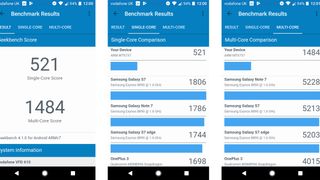
Thermals were a bit of a concern though. The chipset is placed near the rear-camera, and the reason that this is immediately apparent is because this area would frequently reach egg-scrambling temperatures.
The phone can become uncomfortable to hold when it is under full load, which raises questions about the long-term viability of the hardware.
Regardless, it managed a respectable 521 single-core score and 1,484 multi-core one on Geekbench, just behind the slightly more expensive Wileyfox Spark Plus, which achieved a single-core score of 602 and a multi-core one of 1,690.
It’s also close to the significantly pricier Moto G5‘s single-core score of 590, but well below its 2,377 multi-core score.
Current page: What's it like to use?
Prev Page Introduction, key features and design Next Page Battery life and cameraSean is a Scottish technology journalist who's written for the likes of T3, Trusted Reviews, TechAdvisor and Expert Reviews.
